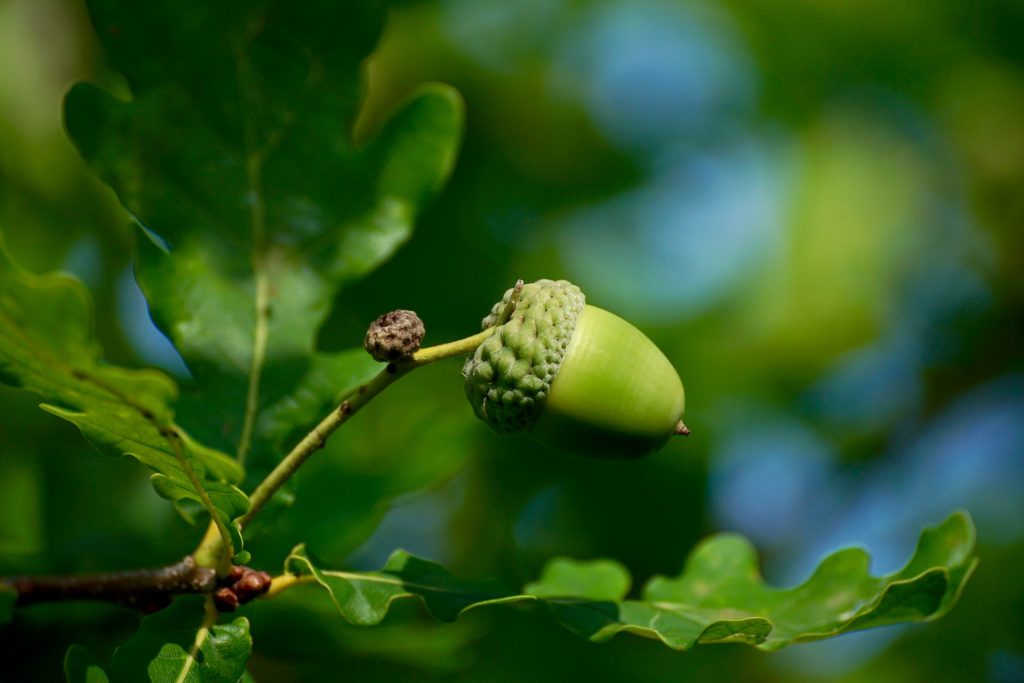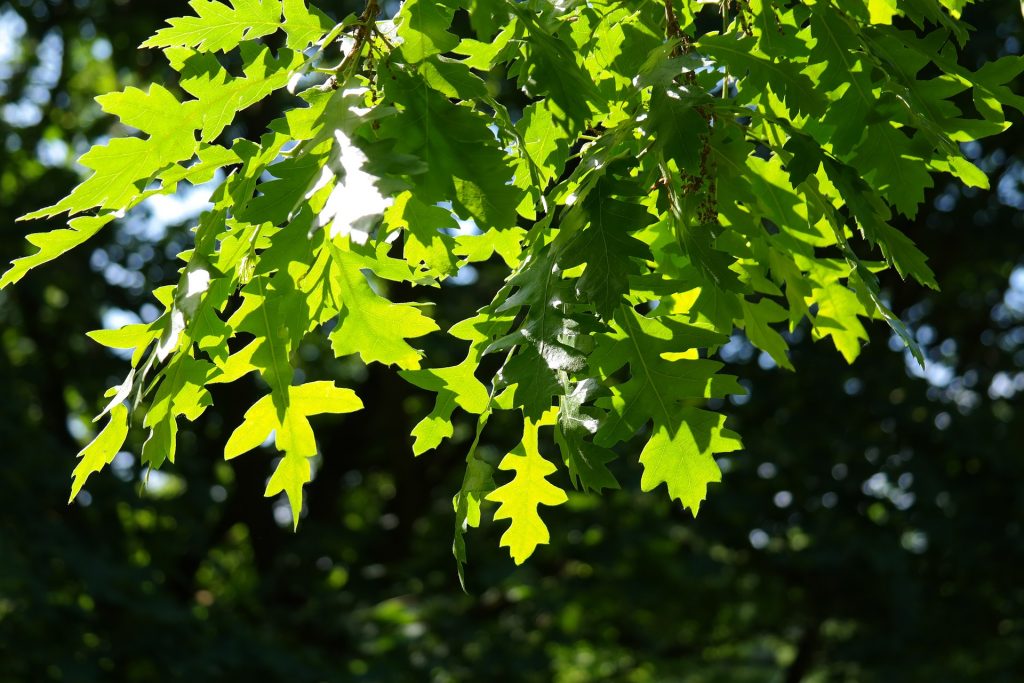 Acorns are the seeds of the Quercus or oak tree. This tree belongs to the Fagaceae or beech family of tree. As well as providing provision for the nutritional requirements of a large diversity of wildlife, acorns are also a useful food for humans. Acorns can be high in tannins, which are a group of water soluble phenolic compounds that may be a defensive product produced by plants to prevent overeating of plant material by herbivores. Tannins possess a bitter taste and may prevent the digestion of protein. Other possible problems with tannins is that they can irritate the epithelial lining of the gut. However, cooking acorns destroys the tannins, and this makes acorns with high tannin content palatable. Acorns also have a high saponin content. The effects of these steroidal and triterpenoid glycosides may also be to inhibit digestion of the seeds. Therefore in their raw form, acorns may not be palatable or digestible in large quantities. Either selective eating or cooking is therefore required in order to make acorns a possible food source.
Acorns are the seeds of the Quercus or oak tree. This tree belongs to the Fagaceae or beech family of tree. As well as providing provision for the nutritional requirements of a large diversity of wildlife, acorns are also a useful food for humans. Acorns can be high in tannins, which are a group of water soluble phenolic compounds that may be a defensive product produced by plants to prevent overeating of plant material by herbivores. Tannins possess a bitter taste and may prevent the digestion of protein. Other possible problems with tannins is that they can irritate the epithelial lining of the gut. However, cooking acorns destroys the tannins, and this makes acorns with high tannin content palatable. Acorns also have a high saponin content. The effects of these steroidal and triterpenoid glycosides may also be to inhibit digestion of the seeds. Therefore in their raw form, acorns may not be palatable or digestible in large quantities. Either selective eating or cooking is therefore required in order to make acorns a possible food source.

Acorns are seeds that are contained within a cup. The cup is removed to reveal the fruit. The fruit is green and fleshy, and turns brown as the acorn ages. If the flesh is cut away, a seed is revealed that is similar in size and shape to a peanut. This is edible raw, if the tannin content is not too high. Cooking will reduce the tannin content and make the acorn palatable.
Acorns have historically been used as a source of food for the poorer classes, where they are often used in a cooked form as bread cake. Dry roasting acorns produces a coffee substitute that has been reported to be consumed in parts of Europe. However, because acorns can vary in their tannin content, acorns with fewer tannins can be selected to eat raw if necessary. As tannins are bitter, the tannin content of the acorns can be estimated by assessing the bitterness of the acorn seed upon chewing. However, as some acorns are not as bitter as others, it might be possible to simply discard those acorns with a bitter taste and only eat those with lower tannin content. Like all seeds the acorn seed is high in energy and is a good source of nutrients. Acorns are around 50 % water and contain about 4.5 kcal per gram. Acorns contain around 4.5 grams of protein and 2.5 grams of fat per 100 gram dry weight. Therefore while acorns are not the easiest of foods to eat, they can contribute significant energy intake if care is taken in preparation.

The oak tree (Quercus) is identified by its distinctive leaves, that are not unlike dandelion leaves. The presence of acorns is also an obvious identification marker.
RdB
Eat Well, Stay Healthy, Protect Yourself
